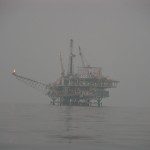About the project
One thing that I just realized is that I haven’t explained what my capstone project is. I am sure that I gave out a link or two so those people will know what I am posting about but what about people stumble on this by accident. So here is the run down on my project. The school that I go to CSU Channel Islands was given money via a grant called B-Wet. This allowed college students to work with high school and middle school students that are underrepresented and to lend them a helping hand in learning about the environment. This portion of the grant is called crossing the channel; this is more of the general of college students helping with high school and middle school aged students. The part that I am helping with specially is the educational portion of the grant. Myself and another capstone student are working with Channel Islands High School and R. J. Frank Academy of Marine Science and Engineering. During the time of the two semesters or the whole school year using a curriculum created by NOAA called LiMPETS, this time was spent teaching the students about the amazing channel that is in their backyard. The people were during this was our advisor Chris, a graduated student (MJ) a fellow CI student named Dulce, fellow capstone student Erika and myself. Erika and Dulce are working with the middle school students; MJ and myself are working with the high school students, lastly Chris goes between both schools and helps us all along. The first lesson we taught was that we split the classes into groups where they needed to do research into a group and animal that both use the channel for different reasons. The groups needed to then present their findings to the class and place a representation of animal where they could be found. After that lesson, Erika and I taught a lesson to the classes about how limited the resources are on our planet. Then Chris, Erika and I taught the classes about how watersheds work and how much pollution can get into the watershed system. This was all done during the past semester.
During this semester Erika and I will be teaching an entire until ourselves. This is where the LiMPETS program comes in. This program was made to get students out of the classroom and out into the field to do some citizen science. The science that the students will be participating in will be looking at intertidal zone and sandy beach. In the intertidal area they are going to be identifying a number of invertebrates and algae’s. They will also be counting and measuring the sizes of Owl Limpets. These are going to be counted and measured because over the course of time people have gotten into the habit of taking these creatures off and eating them. To see how big the limpets get without being taken off and eaten. They also count and Ochre Sea Stars, they are counting these because the sea stars are keystone species because they keep the sea mussel downs. That is what the students will be doing in the intertidal area. Then there the sandy beach stuff. The students are going to try to get sand crabs and measure them, and record all of the measurements of the shells. The students then put the sand crabs back into the sand. That is what the students will do. This will all be done at Carpentaria State Beach on February 18th and 19th.
Do get everything all ready for this all to happen. Erika and I have been working really hard in getting together packets for the students to work on so that they can all hopefully retain the information that we have been giving them. We have been working on lessons and PowerPoint’s for us to give to the students. We have been making plenty of meetings with our advisor Chris and with him giving us plenty of advice on how to continue. So over all everything is going well for me, just got to get through it all.









